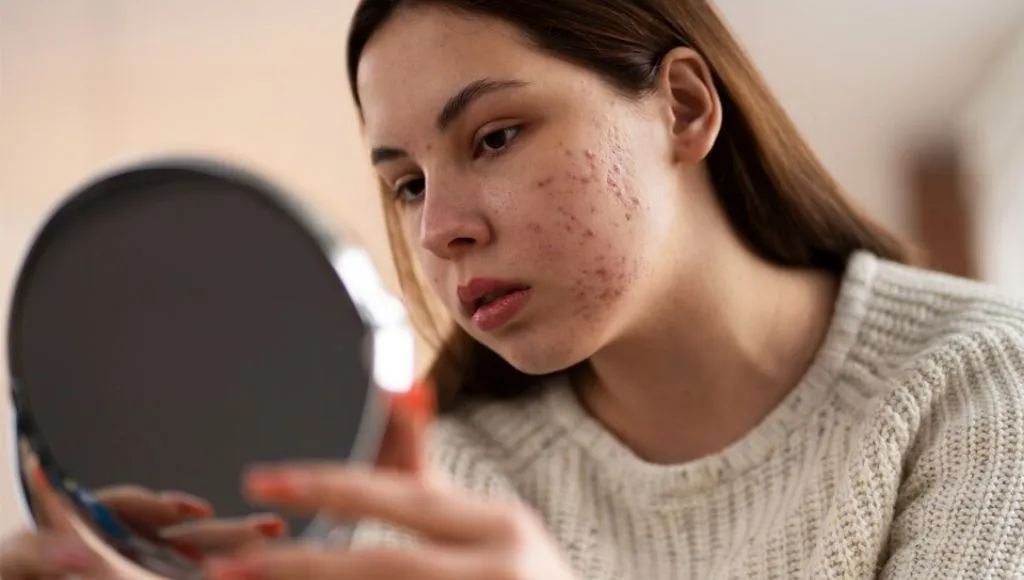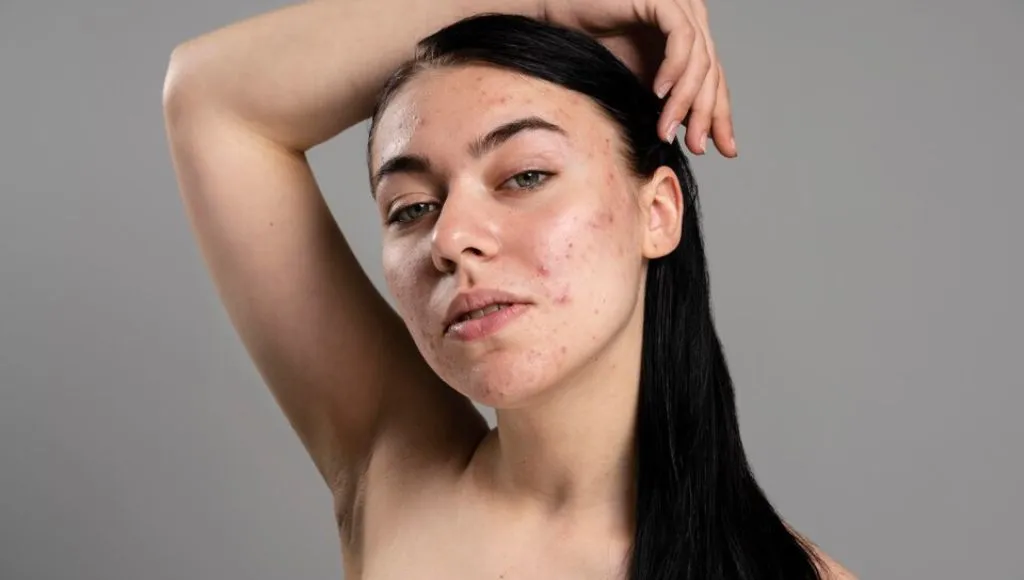Do you have small pimples on your face and nothing helps? Then it’s probably anti-aging. We’ll show you how to recognize and treat fungal acne.
There are different types of skin blemishes. Most of the time they are small or large pimples, which can sometimes become quite badly inflamed. In the best case, they respond to common countermeasures and disappear again after a short time.
But there are also these other bumps on the skin, small reddened pimples that are often very itchy and appear over large areas, usually on the forehead. No matter how you treat them, they cannot simply go away. If this is the case, then you may be dealing with fungal acne. We’ll explain to you what the difference is to normal acne and how you can quickly get rid of fungal acne.
What Is The Cause Of Fungal Acne?
It is believed that the fungus responsible for fungal acne can penetrate particularly deeply into the skin glands and thus stimulate sebum production. This causes skin irritations such as small pimples, redness, and the typical itching of fungal acne.

What Are The Symptoms Of Fungal Acne?
Many of those affected complain of very severe itching. The cause of this is small, skin-colored to reddish nodules, which are also called papules and are thickenings of the skin. The small pimples are also noticeable due to hyperpigmentation, i.e. discoloration of the skin, or crust formation during healing.
How To Treat Fungal Acne?
Conventional anti-pimple products provide little to no help with these small itchy papules.
The Reason: The typical active ingredients of acne therapy have no effect here because they target a bacterial cause. However, since fungal acne is caused by excessive fungal infestation, antibacterial agents such as antibiotics do not work. But there is a solution to the problem, and it sounds simpler than you might expect.
CHECK OUT:- Harnessing The Benefits Of Spearmint Tea For Acne Treatment
Anti-Dandruff Shampoo Against Fungal Acne
To successfully combat fungal acne yeast, the simple answer is: get an anti-dandruff shampoo. But what does an anti-dandruff shampoo have to do with combating fungal acne?
Quite Simple: What seems right for the scalp cannot harm other areas of the skin, it does not matter whether the small pimples are on the forehead, scalp, or neckline, you use the anti-dandruff shampoo like a normal care product, simply apply it as a mask and leave the product on for about five to ten minutes. Then rinse it thoroughly. You should then moisturize your skin thoroughly.
If you are unsure whether your pimples are actually fungal acne, you can make an appointment at the dermatologist’s office and wait for the final diagnosis.
Are There Home Remedies For Fungal Acne?
Before you let anything chemical touch your skin, you will probably want to consider using home remedies for small pimples. But beware! Many of the products such as tea tree oil, lemon juice, or apple cider vinegar should be used with caution, especially if you have fungal acne.
CHECK OUT:- How To Use Apple Cider Vinegar For Acne Scars? No More Acne Scars
How To Prevent Fungal Acne?
Nevertheless, there are ways to contain the yeast fungus and stop it from spreading excessively. One of them is to avoid heat. Since the fungus spreads particularly well in a warm environment, you should avoid steam baths and avoid the sun. This particularly affects pimples on the face.
Salicylic Acid For Fungal Acne
Salicylic acid has also proven effective in the fight against fungal acne. Salicylic acid, or beta-hydroxy acid (BHA), does not attack the yeast directly, but first dissolves the sebum in the pores. This deprives the fungus of the basis for reproduction. BHA has a fat-soluble effect and can therefore be used to prevent fungal acne. However, the acid should not be used too often: it is enough if you apply it once or twice a week in the evening.
Best Protection Against Fungal Acne
Good Blood Circulation: Yeast fungi love a fatty, oily environment. The more sebum is produced, the better the fungi feel, and tend to multiply more. In order to regulate this sebum production, you should increase blood circulation in the skin. We recommend using a derma roller for this.
To curb sebum production, it is also important to give the skin enough moisture. This means it can build up its natural protective layer independently and fight yeast fungi itself. Because if the skin does not receive any moisture, it thinks it’s dying of thirst and produces much more sebum to protect itself from environmental influences.

